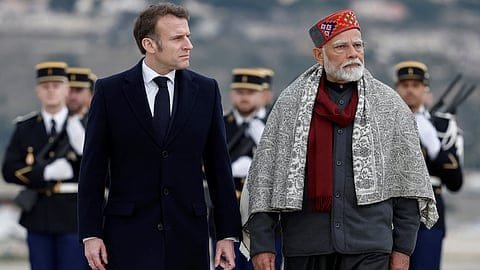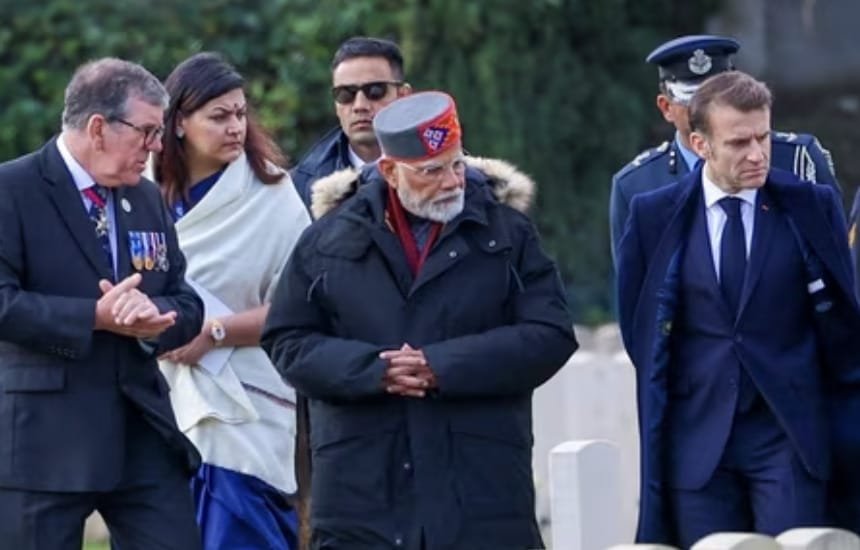
The Himachali cap, also known as Pahadi Topi, has always been an integral part of Himachal Pradesh’s rich culture and heritage. It is not just a piece of headgear but a symbol of tradition, identity, and pride for the people of the hills. This cap has gained immense recognition in recent years, especially after Prime Minister Narendra Modi wore it during his visit to France. His gesture of donning the Himachali cap on an international platform has once again brought the spotlight to this iconic cultural accessory.
PM Modi’s Love for the Himachali Cap
Prime Minister Narendra Modi has often been seen embracing local traditions, and his fondness for the Himachali cap is no exception. During his visit to France, he was spotted wearing the Himachali cap, which immediately became a talking point among Indians worldwide. This wasn’t the first time; he has worn the cap on multiple occasions, showcasing his deep respect for Himachali culture. His gesture not only highlights his appreciation for traditional Indian attire but also promotes the unique handicraft of Himachal Pradesh on a global stage.
A Favorite Among Celebrities and Politicians
It is not just PM Modi; many Indian celebrities and politicians have been seen wearing the Himachali cap, further increasing its popularity. Leaders like Amit Shah, Rajnath Singh, and Arvind Kejriwal have sported this cap at various events, showing their admiration for the rich heritage of Himachal. Bollywood celebrities like Anupam Kher and Kangana Ranaut, both of whom have roots in Himachal, have also worn the cap with pride. The widespread acceptance of the Himachali cap across different fields of society speaks volumes about its cultural importance.

The Kullu Connection: 95% of Himachali Caps Are Made Here
While the Himachali cap is worn across different regions, Kullu Valley is the heart of its production, with 95% of these caps being crafted in Kullu. The skilled weavers of this region use traditional techniques to make these caps, ensuring that each piece reflects the vibrant cultural legacy of Himachal Pradesh. The caps come in different styles, with variations like the Kullu, Kinnauri, and Bushahri caps, each having distinct color patterns and embroidery that represent their respective regions.
Cultural and Traditional Importance
The Himachali cap is more than just an accessory; it is an essential part of the state’s identity. It is worn on festivals, weddings, and political gatherings, symbolizing honor and respect. The traditional patterns on the cap hold deep meanings, often representing the mountains, rivers, and nature that define Himachal Pradesh. Wearing the cap signifies pride and a connection to one’s roots, making it a cherished item for every Himachali.
A Boost for Himachali Handicrafts and Economy
With growing recognition, the demand for Himachali caps has increased significantly. This surge in popularity provides a great economic opportunity for the local artisans and weavers who have been making these caps for generations. Initiatives promoting handmade, locally crafted products are essential in ensuring that this traditional craft thrives in the modern market.
Conclusion
The Himachali cap has come a long way from being a regional identity to becoming a national and even international symbol of Indian tradition. With PM Modi, Indian politicians, and Bollywood celebrities embracing this beautiful piece of Himachali culture, its significance has only grown stronger. As more people recognize its heritage and craftsmanship, the Himachali cap stands as a proud representation of Himachal Pradesh’s rich culture, history, and artisanal excellence.
The next time you see someone wearing a Himachali cap, remember—it’s not just a fashion statement; it’s a symbol of tradition, pride, and the artistic legacy of the hills!
